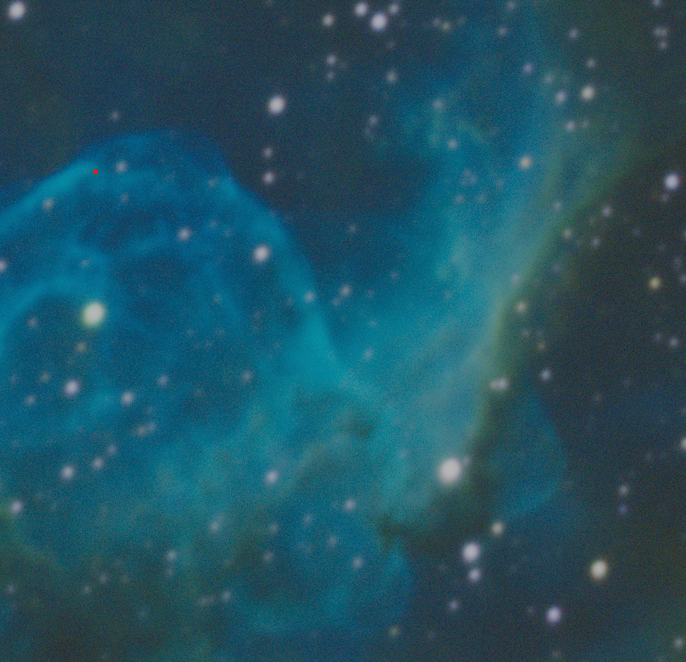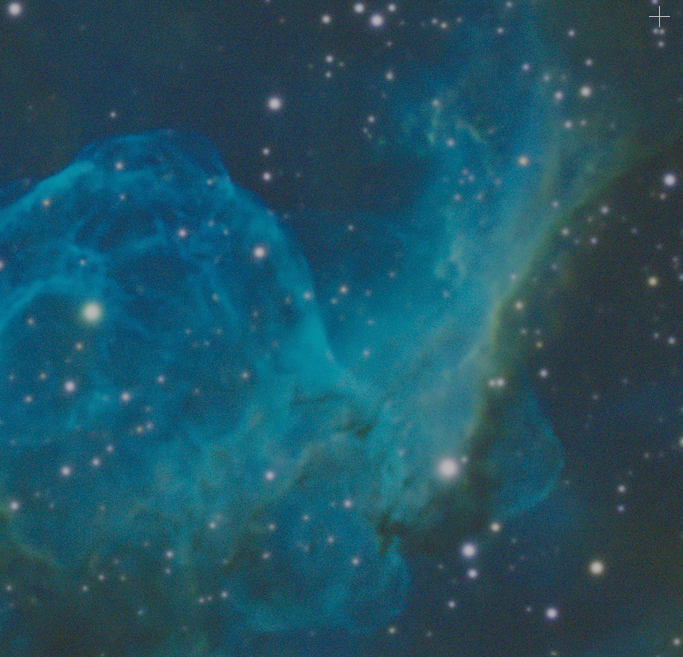Thor’s Helmet is an emission nebula about 12,000 light years distant in the constellation Canis Major. I’ve always thought this was a cool-looking nebula and I wanted to give it a try with my imaging gear. Being in southern AZ for a few months this winter, it seemed like a good time to try it since it’s a southern target. I would have preferred to shoot this using my C8, but it didn’t make the trip to AZ with me. The best I had to work with was the optical tube assembly (OTA) from my Celestron NexStar 6SE, which I installed on my iOptron GEM28 mount for this shot. I thought I was prepared for a couple nights of decent imaging, but Murphy had other plans.
I used a Starizona SCT Corrector IV reducer/flattener with the 6″ SCT so that its net focal length (FL) was around 1200 mm (f/8). This is still a pretty long focal length and would generally demand the use of an off-axis guider (OAG) instead of a guide scope. However, the NexStar 6SE OTA rear opening (where you would attach a star diagonal and eyepiece) is only 1.25″ in diameter–too small to use an OAG. So I was stuck using a guide scope with a focal length of only 200 mm–the biggest I had with me, but not really big enough to use with a main scope of 1200 mm FL.
My GEM28 mount should be capable of guiding accuracy in the range of 0.5 to 1.0 arc seconds with a 200 mm guide scope, but so far it’s not been able to achieve that. In fact, guiding has typically been in the neighborhood of 1.0 to 1.5 arc seconds, with occasional excursions in both RA and declination of several arc seconds, and I fought this poor guiding for all three nights of imaging Thor’s Helmet. Additionally, there were several instances where the mount simply stopped tracking, even though it appeared to think that it was still tracking. My only clue that this was happening was that PHD2 would complain that it had lost its guide stars–something that doesn’t generally happen under clear skies. Of course the sub being taken at that time would be totally useless, and I would have to recenter the target and start tracking and guiding again.
I shot ten-minute subs with Ha, SII, and OIII filters, and then some two-minute subs to capture RGB for the stars. Between the lousy guiding and the finicky tracking, I was surprised that I got any data at all. I did manage to get about 10 hours of marginally-acceptable subs. I used PixInsight to process the image, starting with the Weighted Batch Pre-Processing script (WBPP). After I combined the narrowband masters into an SHO (Hubble palette) image, the result was not sharp and had egg-shaped stars–just what you would expect from lousy guiding. Here’s a zoomed-in shot:
Thankfully, the BlurXTerminator (BXT) tool for PixInsight was able to make some major corrections and I was able to salvage a passable image from this data. Here’s the same zoom after applying BXT:
BlurXTerminator is almost magical in its ability to clean up a lousy image. Here the difference it made is obvious–the image is generally sharper, but best of all the stars have been corrected. Using BXT almost feels like cheating.
Now it’s time to dig into the GEM28 mount to see if I can figure out why guiding has been poor, and why it stops tracking for no reason. I bought the GEM28 specifically for travel because it’s compact but still (supposedly) capable, but so far it’s not living up to expectations.



